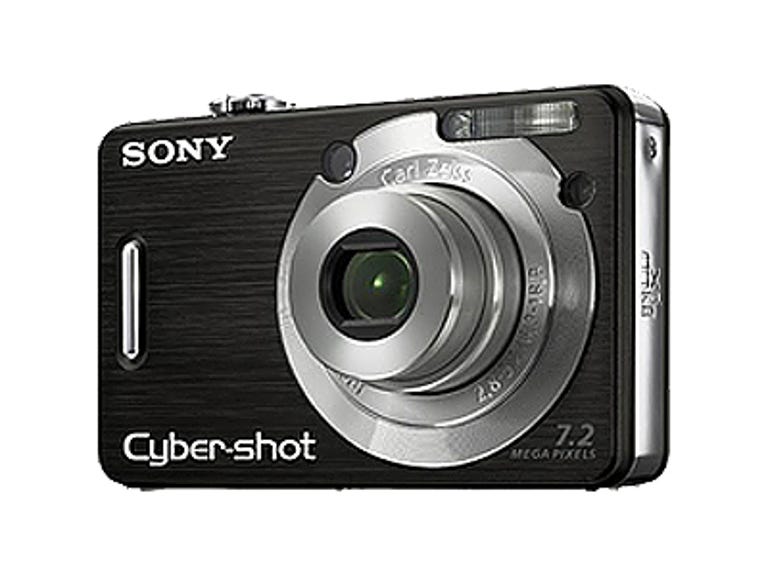 Why You Can Trust CNET
Why You Can Trust CNET Sony Cyber-Shot W55 review: Sony Cyber-Shot W55
Sony Cyber-Shot W55
Against slimmer, more stylish cameras such as the significantly more expensive Cyber-shot DSC-T50, the W55 won't win any beauty contests. Behind the pretty face hides a blocky, half-plastic compact camera that's built more for ease of use than for fashion. Its 5.1-ounce body, at less than an inch thick, fits easily into almost any pocket. With the exception of its irritatingly recessed power and review buttons, the W55's controls feel large, responsive, and easy to manipulate. A small optical viewfinder sits just above the camera's 2.5-inch screen, a useful feature that adds to the camera's function-over-form design.
The Good
The Bad
The Bottom Line
The DSC-W55 performed quite well in our lab tests, starting up in only 1.3 seconds and firing off shots every 1.4 seconds thereafter. With the flash enabled, that interval increased to 1.7 seconds, still an impressively short wait. In bright light, the shutter responded quickly for its class, lagging only 0.5 second. With our low-contrast target, however, that time tripled to 1.5 seconds. Burst mode also lagged, snapping four full-resolution photos in 2.9 seconds for a disappointing frame rate of 1.3 shots per second.
Overall, we found the DSC-W55's photos clear and pleasing. Despite the slight softening of some finer details, photos looked crisp. Colors generally reproduced well, though users should remember to switch to the tungsten white-balance setting when shooting indoors--the W55's automatic white balance fared poorly in our difficult tungsten-lit test shots, rendering harsh and yellow.
Sony tames noise impressively throughout the DSC-W55's sensitivity range. At ISO 100 we saw no significant noise, even when scrutinized on a monitor. Extremely small speckles became visible on a display for ISO 200 and ISO 400 shots, but not in prints. At ISO 800, noise became apparent in prints and was very noticeable on monitors. Surprisingly though, even at ISO 1,000, the W55 produces usable, if grainy, prints with vivid and accurate colors. However, we'd suggest staying below ISO 1,000 or ISO 800 when possible for best results. The W55 improves greatly over the DSC-W30 in this respect, with its noisy and dull high-ISO photos.
The Sony Cyber-shot DSC-W55 doesn't have any notable or unique features, but its quick performance and solid picture quality make it a fine choice budget choice, plus it offers a larger screen and a nicer finish for just $20 more than the W35. Not a bad upgrade for a single picture of Andrew Jackson.
(Shorter bars indicate better performance)
| Typical shot-to-shot time | Time to first shot | Shutter lag (typical) |
(Longer bars indicate better performance)
